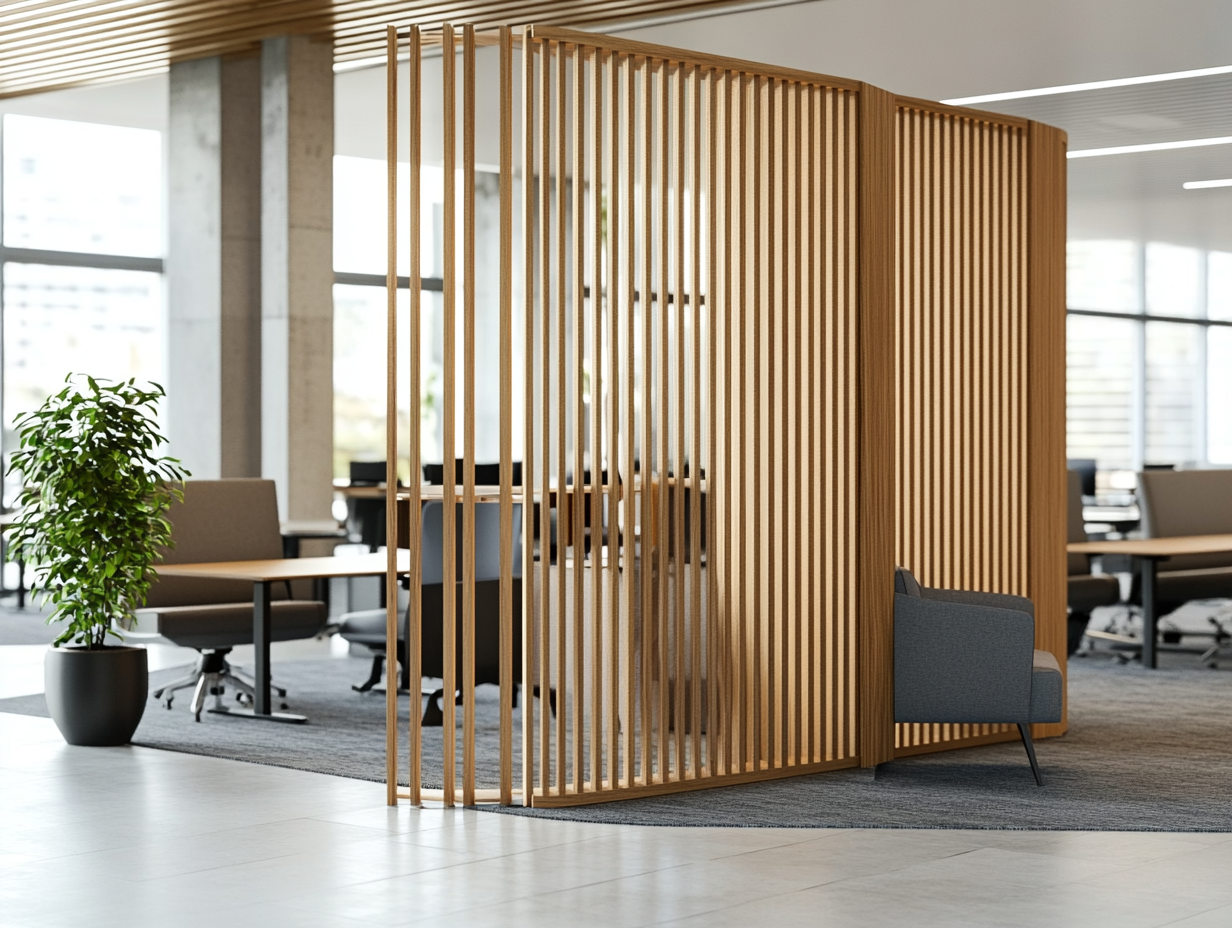
Natural Wooden Acoustics Solutions

Wooden Acoustic Panels: Improve Sound Quality and Add Natural Beauty
In today’s bustling world, where open-plan offices, high ceilings, and minimalist designs often prioritize aesthetics over acoustics, unwelcome noise can quickly become a significant problem. Reverberation, echoes, and general sound clutter can disrupt focus, reduce productivity, and even contribute to stress. The solution? Wooden acoustic panels. These panels not only dramatically improve sound quality but also infuse spaces with the warmth and organic charm that only real wood can provide.
The effectiveness of wooden acoustic panels lies in their ability to absorb sound waves, reducing reflections and controlling reverberation. Unlike hard, reflective surfaces such as drywall or concrete, wooden acoustic panels are specifically engineered with varying levels of porosity and density. This allows them to capture sound energy and convert it into minuscule amounts of heat through friction.
The key components of a wooden acoustic panel that contribute to its sound absorption properties are:
Surface Material: The type of wood used, its thickness, and any perforations or grooves significantly impact sound absorption. Certain woods are naturally more absorbent than others.
Acoustic Infill: Often concealed behind the wood surface, this layer is typically made of materials like mineral wool, fiberglass, or recycled cotton. This infill further enhances sound absorption across a broad range of frequencies.
Air Gap: The space between the panel and the wall or ceiling also plays a critical role. This air gap allows lower frequencies to be absorbed more effectively.
By strategically placing these panels, you can tame unwanted noise and create a more comfortable and productive acoustic environment.
Wooden acoustic panels are more than just sound dampeners; they are design elements that bring warmth, texture, and a sense of natural elegance to any space. Available in a wide array of wood species, finishes, and patterns, these panels can seamlessly integrate into diverse architectural styles, from modern minimalist to rustic farmhouse.
Imagine the following scenarios:
A sleek, modern office enhanced with vertically oriented, light-colored maple panels.
A home theater featuring dark walnut panels for a rich, immersive sound experience.
A restaurant adorned with reclaimed wood panels, creating a cozy and inviting ambiance.
The possibilities are truly endless. Wooden acoustic panels offer a design flexibility that few other acoustic solutions can match. They transform utilitarian spaces into visually appealing environments.
Selecting the appropriate wooden acoustic panels for your project requires careful consideration of several factors:
Acoustic Requirements: Assess the specific sound issues you need to address. Different panels are designed to absorb different frequencies. Consult an acoustician for expert advice.
Panel Type: Explore various panel types, including slotted, perforated, and solid wood panels with hidden infill. Each type offers unique acoustic performance and aesthetic qualities.
Wood Species and Finish: Select a wood species and finish that complements your existing decor and reflects your personal style. Consider factors like grain pattern, color, and durability.
Installation Method: Determine whether you prefer direct mounting, suspension systems, or other installation methods. Proper installation is crucial for optimal acoustic performance.
Budget: Wooden acoustic panels range in price depending on the wood species, size, complexity, and installation requirements. Establish a budget and explore options within your price range.
Proper installation is vital to maximizing the acoustic benefits of your wooden panels. While some individuals with DIY experience may be able to handle basic installations, it’s often best to enlist the services of a professional installer, especially for complex projects or custom designs.
Maintaining your wooden acoustic panels is relatively simple. Regular dusting with a soft cloth will help prevent dust buildup. For deeper cleaning, use a mild soap and water solution and avoid harsh chemicals or abrasive cleaners. With proper care, your wooden acoustic panels will provide years of exceptional sound quality and aesthetic appeal.
Many wooden acoustic panel manufacturers are committed to sustainability, utilizing responsibly sourced wood and eco-friendly manufacturing processes. Look for panels made from FSC-certified wood, reclaimed wood, or other sustainable materials. By choosing these options, you can improve your acoustic environment while minimizing your environmental impact.
Wooden acoustic panels offer a compelling combination of acoustic performance, aesthetic versatility, and sustainable design. By investing in these panels, you can transform noisy, uncomfortable spaces into tranquil, visually appealing environments that promote focus, productivity, and well-being. Embrace the beauty of wood and experience the difference that high-quality acoustics can make.